 Written by Amanda Marten, MSN, APRN, FNP-C
Written by Amanda Marten, MSN, APRN, FNP-C
The hip joint is made up of the ball at the end of the thigh bone and the socket in the pelvis. It takes a lot of force to injure this joint, but when it is affected by strains, bursitis, dislocation, fractures, arthritis, or osteoporosis, it can cause pain and severely diminish mobility and range of motion. More than 300,000 seniors are hospitalized each year because of hip fractures, and hip dislocation from trauma is also not uncommon. Supporting the hip with a brace improves stability and mobility and helps users be more comfortable conducting daily life activities.

A hip brace promotes healing by keeping the hips level, restricting motion, and holding the thigh bone in the hip socket, and can be used to address a variety of conditions. Certain models can also keep knees and hips separated at a prescribed angle.
Hip replacement surgery, also called total hip arthroplasty, is most commonly used to address pain and limited mobility caused by arthritis. After surgery, certain positions can cause the ball of the hip joint to come out of the socket. Usually after surgery, a hip abduction brace needs to be worn to restrict excessive motion and hold the leg out to the side, which limits the amount you can bend your leg forward and move it across your body. A hip abduction brace is worn outside of clothing. It has two harder pieces, one on the outside of the waist and one on the thigh, each lined with a cushioned pad and each with a strap. The two pieces are connected by a hinged joint on the outside, which is adjusted according to the doctor’s instructions. One strap goes around the waist and the other around the thigh to hold it in place. A hip abduction brace is usually worn 24 hours a day for 2 to 4 weeks following surgery, helping stabilize the joint and allowing the soft tissue in the area to heal as well.

Most hip dislocations are caused by car accidents or following a hip replacement when the femoral head escapes the socket because of overreaching range of motion, especially in the first three months after surgery. A hip abduction brace is used to prevent the leg from making excessive movements away from the body and eliminate the risk of hyperflexion, where the knee moves toward the chest. It’s worn to stabilize the joint for a few weeks up to a few months after the dislocation. It should always be worn if you are using crutches, and doesn’t need to be worn while sleeping, toileting, showering, laying on your stomach, or while icing your hip. As noted previously, this type of brace is worn outside of clothing. It has a hard piece with a cushioned pad and a strap on the outside of the waist and another on the thigh. The two pieces are connected by an arm joint on the outside, which is adjusted according to the treatment plan. One strap goes around the waist and the other around the thigh to hold it in place.
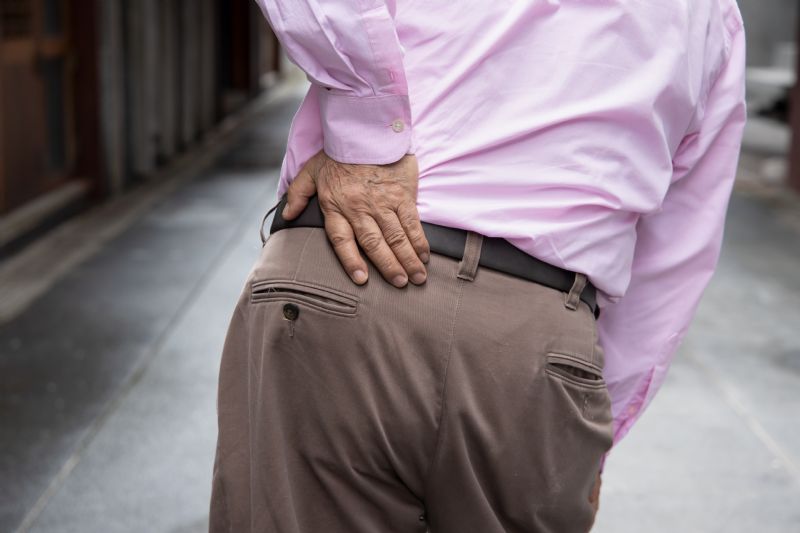
Osteoarthritis is a degenerative joint disease and is the most common form of hip arthritis. It breaks down cartilage from wear and tear, getting worse as we age, causing painful inflammation. Bracing for osteoarthritis of the hip is commonly known as offloading or unloading. The joint is stabilized through compression to keep it correctly aligned while dispersing the weight bearing load. These braces can reduce the compressive joint reaction force, decreasing the internal rotation and abduction to relieve pain. The compression also helps increase blood flow and decrease swelling. These braces are usually lightweight and can be worn under your clothes while performing everyday activities. They may be prescribed for activities or for 24-hour-a-day wear, depending on your situation. They are often slipped on the thigh and wrap around the waist. For sacroiliac pain, a belt that limits the movement of the Si joint does not have a leg component, and instead is a stretchy wrap worn snuggly around the hips. In addition, these braces are often part of pre-surgery treatment for people who are having hip replacements.
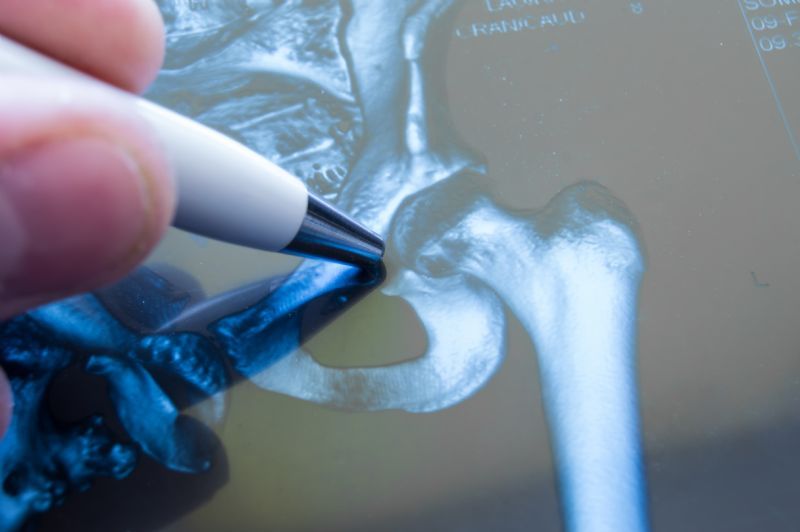
Sciatica causes radiating pain along the sciatic nerve, which goes from the lower back through the hips and bottom then down each leg. It most commonly occurs when a herniated disk, bone spur, or spinal stenosis compresses the sciatic nerve causing inflammation, pain, and numbness. A hip or lumbar brace with groin support can be worn over the lower back as needed for short amounts of time to help stabilize and support the area. These are worn under clothing, made of breathable material, and are adjustable for an appropriate fit.
.jpg)
Hip pain and instability can be caused by sports and other physically strenuous activities. In these cases, a small amount of support and compression can provide relief from pain and discomfort by providing stability, correcting alignment, and ensuring proper joint positioning. Hip braces for sports range from lightweight neoprene hip wraps to thigh sleeves with a waist wrap to more substantial pieces with external hinged thigh bracing. Some wraps can be worn during exercise to provide compression to help torn or strained hip flexor muscles or decrease pain from sciatica, but most of the time they are worn after exercise to provide a bit of compression and support during muscle recovery.

An abduction brace is the most popular type of hip brace, and it’s worn outside at least one layer of clothes. The waist section is slid under the user’s waist while the leg is carefully lifted into the thigh section. The straps from the waist and thigh sections are fastened and adjusted to maintain proper alignment, and the hinged bracing limits the movement of the hip joint.
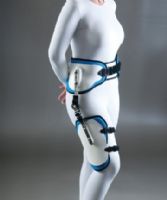 | TLC Hip Abduction Brace View Product |
Also called a double hip brace, a bilateral hip brace supports both the left and right leg and hip. This brace can be used before and after surgery, for anterior and posterior hip dysplasia, hip revisions, and mild to moderate osteoarthritis in the hip. This design provides flexion, extension, abduction, and adduction. These braces are sometimes hard sided and sometimes soft sided, with thigh sleeves and straps for both legs connected to the section that wraps around the waist.
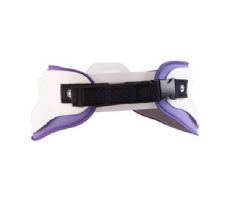 | Newport 4 Universal Adjustable Hip Orthosis by Orthomerica View Product |
Compression is one of the best treatments for overuse injuries and can help muscles recover faster through increased circulation to an area. These hip compression wraps are also known as hip and groin compression wraps, and they range in price from $25 to $100. Although it’s not necessary to pay the highest price to get a quality product, the lowest end of the range are not made as well and are not as durable as those priced in the middle of the range.
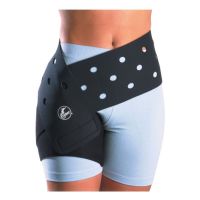 | Hip Compression Brace for Groin Strains by Milliken Medical View Product |
Also known as a hip support belt, a sacroiliac belt is worn snugly around the hips to address pelvic, lower back, and leg pain from an inflamed or hyper-mobile sacroiliac (SI) joint. Since these are worn continuously for weeks, the most comfortable options are lightweight and breathable while providing maximum support. This type of support belt can be worn under or over clothes.
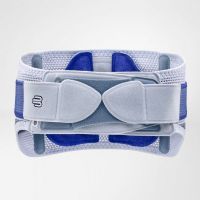 | SacroLoc Pressure Massage Back Support for Back Pain by Bauerfeind View Product |
When you need knee support coupled with hip stabilization, an expandable hip abduction orthosis splint separates the hips and knees gradually, using abductor muscle resistance for support. This kind of brace treats non-fixed contractures of the hip and knee while addressing hip or knee scissoring, joint destabilization, post surgery or injury trauma, wound management, range of motion, and ability to perform activities of daily living.
A: Hip braces that deliver compression are used to help torn or strained hip flexor muscles and reduce the pain of sciatica.
A: An orthosis is an externally applied device that is designed and fitted to the body to control biomechanical alignment. A brace is a type of orthosis. Other types of orthoses are splints.
A: One of the benefits of all the braces featured in this article is that they address underlying factors that contribute to hip pain. Hip pain caused by mild to moderate hip osteoarthritis can benefit from an offloading brace that distributes weight and stabilizes the hip. Hip pain from dislocation, surgery, or injury can be addressed through a hip abduction brace that keeps the hips level, restricts motion, and maintains the position of the thigh bone in the socket. Braces offering targeted compression increase blood flow to soothe pain and decrease swelling and inflammation.
A: A hip brace supports your hip and keeps your leg in the correct position to reduce the risk of pain, injury, or dislocation while still allowing you to get up and move around. If soft tissues have been damaged, a hip brace also allows them to heal. By keeping a wearer’s leg out to the side a bit, a hip brace limits how much a leg can be bent forward and moved across the body, preventing dislocation.
A: Bed rest, a therapeutic regimen alternating between heat and cold packs, and surgery are alternatives to wearing a hip brace.
A: A hip abduction brace is usually prescribed after a hip replacement to restrict motion and limit how much you can bend your leg and move it across your body. It includes two padded harder pieces, one on the outside of the waist and one on the thigh, each with a strap used to hold the brace in place. A hip abduction brace is usually worn on the outside of clothing 24 hours a day for 2 to 4 weeks following surgery.
A: Hip braces are often covered by insurance if they are determined to be medically necessary. Hip replacement surgery creates a medical necessity for a hip brace while on crutches to prevent movement that could damage the joint. Consult with your insurance provider for more information.
A: Hip loading refers to the force put on the hip joint during activity. Hip loads and accompanying internal hip abduction movement inform treatment and therapy for hip pain.

Hip pain is not uncommon, and can be an indicator of underlying conditions that can cause acute or chronic discomfort. By using a hip brace, you can support and stabilize the hip to support mobility and contribute to comfortably undertaking daily life activities.
Thank you for your time reading this article with tips on choosing the best hip brace for your needs! Visit Caregiver University for more information including buying guides and product reviews.

Amanda Marten, MSN, APRN, FNP-C
Amanda is a certified family nurse practitioner and freelance health writer. With eight years of nursing experience, she has worked in a variety of specialties including urgent care, post-surgical, intensive care, and travel nursing. She is passionate about patient education and strives to make a positive impact on her patients’ well-being.